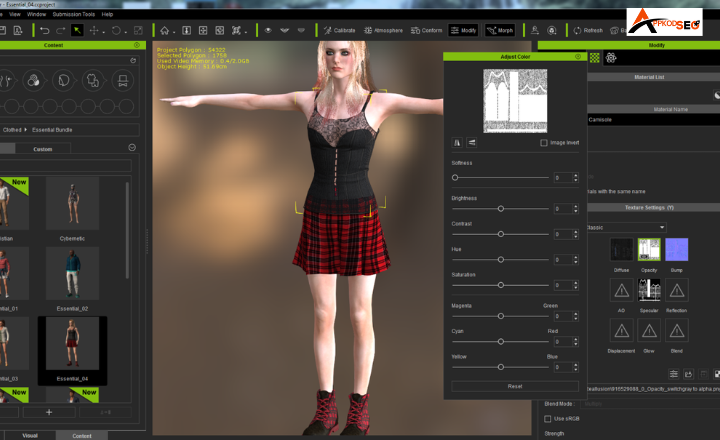
Old Character AI was an intriguing website where users could interact with AI-generated characters. People enjoyed having conversations with fictional representations of historical figures or beloved superheroes.
Even though newer versions are available now, many people still reminisce about the Character AI Old and long for its unique charm.
However, sometimes things don’t go as perfectly as users expect with each update. This is what happened with Character AI. It is one of the most popular AI character chatbots that offers an amazing virtual chatting experience with hundreds of characters.
The app received frequent updates, just like any other application, and completely customized its features. Soon, people started missing Old Character AI because it gave a better and more engaging experience.
In this article, I’ll walk you through a complete overview of Old Character AI. Together, we will learn what it was, why it’s still a favorite of many people, and if it’s still possible to use it. Let’s start.
What is Old Character AI?
Old Character AI is the old version of the ‘Character AI’ platform that offered simple AI character chatting features. It is usually referred to as the version that was used between 2021 and 2023.
Just like every other platform, it received updates as well. Its developers introduced new features and removed most of the old ones gradually.
Soon, people started to realize that the newer version is not as good as the old one. They preferred things like user interface, character customization, and other features of the old Character AI.
Even if the platform works smoothly now and offers tons of different features, a huge part of the user community still misses the old platform and wants to use it again.
The Birth of Character AI
Character AI emerged as a revolutionary platform that allowed users to create and interact with characters generated by artificial intelligence. The initial version, affectionately termed, represented a significant leap in making AI technology accessible to everyone.

Users find themselves forming attachments to these characters, challenging traditional notions of companionship and emotional connection.
This phenomenon opens up new avenues for applications in entertainment, education, and mental health, suggesting that Character AI is not merely a deep AI tool but a potential partner in our digital lives.
What Do Many People prefer the Old Character AI?
The Old Character AI was simple, effective, and used to do its job without complications. It has straightforward features that many people prefer over the new version.
Some main reasons why people still prefer the old version are:
User Interface:
The user interface is one of the biggest things that have changed in the modern version of this chatting platform. It’s sleeker and even offers a modern look. However, the old version was very simple. It had all the main options right in front of the user. Users could play around with features the way they wanted to without facing any confusion.
Special Features:
The older version of Character AI had some specific features that aren’t on the new one anymore. These features, such as room creating and character book, offered a very engaging and fun experience. Now, these features aren’t available, which makes the new platform very dull for some.
Engagement:
Many people believe that the old characters were more engaging than the new ones. Although AI has improved a lot in recent years, the natural feel of chatting with a character isn’t there anymore. People prefer the old version because its character felt more natural and less repetitive.
So, these are some basic reasons why a huge number of users prefer the old version of this platform.
Now, I will shift the discussion towards describing some popular features that made the older version perfect.
What Made Old Character AI Special? Features
Old Character AI was special because of its features. It had some decent features that made it more fun, engaging, and simpler. Here are some of the main features:
Explore Feed:
The older version had an explore feed. It included characters and their conversations with different users. The feed tab used to include characters based on the user’s preferences. It made it easier for users to explore the platform and discover characters they’d love to chat with.
Create a Room:
Another feature that made this version fun was creating a room. People could create a room containing multiple AI characters. In the room, the characters could easily talk to each other as well as the user. It was a very fun way to see how each character interacted with the other.
Create a Persona:
The best way to get responses from an AI chatbot is to tell it about your preferences, likes, and dislikes. The old Character AI allowed people to do this via the persona feature. Users could easily create their avatar’s persona and add details like personal traits and communication style.
Adding a persona made AI characters respond according to your preferences. This was a feature that took engagement and the natural feel of chatting with virtual characters to a whole other level.
User Community:
The older version also had the “community” features. All users were allowed to interact with each other without any restrictions. People could share their experiences with characters and even share the characters that they have created. This whole experience made using Character AI more engaging and fun.
Categories & Filters:
For a better user experience, the older version had divided all the available characters into different categories. It made it easier for people to find their preferred character and chat with it quickly. The filters feature lets users filter down the search results so that they can find their character quickly.
Save & Start Chat:
The ‘save & start new chat’ feature made it easier for people to switch topics during discussion without losing the conversation on the previous topics.
Whenever a user felt bored discussing a topic, they could simply save the current chat and then start a new one. The new chat was completely fresh and new. The user could also access the old saved chat whenever they wanted to.
Character Book:
The character book was a special feature of the Old Character AI, which worked like a guide. It contained useful information about the character, such as the history behind its creation, along with some tips and tricks. This information was useful for users who wanted to know more about the character they were chatting with.
Create a Post:
To make the whole experience more engaging, the platform added the “create a post” feature as well. This feature used to let people create and share a post about their interaction with the bots with other people on the platform. People could see this post and then interact with it by sharing their thoughts.
Better User Interface:
The user interface of the old version was better, more engaging, and simpler. Users could easily find their characters and use all the features of the platform without getting confused.
How to Revert to Old Character AI?
If you’re wondering how to get Old Character AI back, unfortunately, there’s no way to do it. The platform has shut its door to the older version. People can only use the new version now and engage with new characters.
Keep in mind that there might be some online platforms that provide some methods, such as using Old Character AI APK. However, those methods are not legit and don’t work at all.

Popular Characters from Old Character AI
Users loved interacting with a diverse array of characters on the platform, including historical figures like Albert Einstein and Cleopatra, and fictional icons such as Harry Potter and Sherlock Holmes. Celebrity personas were brought to life in AI form, alongside characters from classic literature, like Elizabeth Bennet from Pride and Prejudice.
Mythological figures such as Zeus and Thor added a legendary flair, while renowned scientists and philosophers like Nikola Tesla and Marie Curie offered intellectual engagement.
The platform also featured unique user-created or platform-designed characters, as well as helpful assistants tailored to provide advice on specific topics.
Conclusion:
Old Character AI is an old version of the original platform that offered some great features. It was simple, engaging, and used to generate less repetitive and robotic responses. People could create their personas and explore character feeds.
They could also engage with other people in the community and share ideas, tips, and tricks. As the platform updated, these features simply vanished. Now, many people try to revert to the older version, but that’s not possible anymore. The official platform has closed the older version, and people can only use the new one.
Frequently Asked Questions (FAQs):
Is Old Character AI down?
Yes. The Old Character AI is officially down and not available for users anymore.
Is there any educational value?
Yes, analysing older systems can enhance our understanding of machine learning, natural language processing, and user interaction, making it a crucial part of AI education.
What made Old Character AI special?
Old Character AI was special because of its simplicity and natural responses. It has engaging features, and the conversation with its character felt less robotic.
What happened to old Character AI?
Old Character AI has now been updated. The app gradually kept on releasing new features in updates, and old features slowly vanished.
Why is Character AI so famous?
Character AI is famous because it allows you to chat with hundreds of AI characters. People can find their favorite characters and have a virtual conversation with them on chat. The platform’s convenience and engaging features make it famous.
Did the older version of Character AI allow creating a persona?
Yes. Your users were able to create a persona according to their preferences. This feature helped them receive responses from AI characters that matched their own style and preferences.



